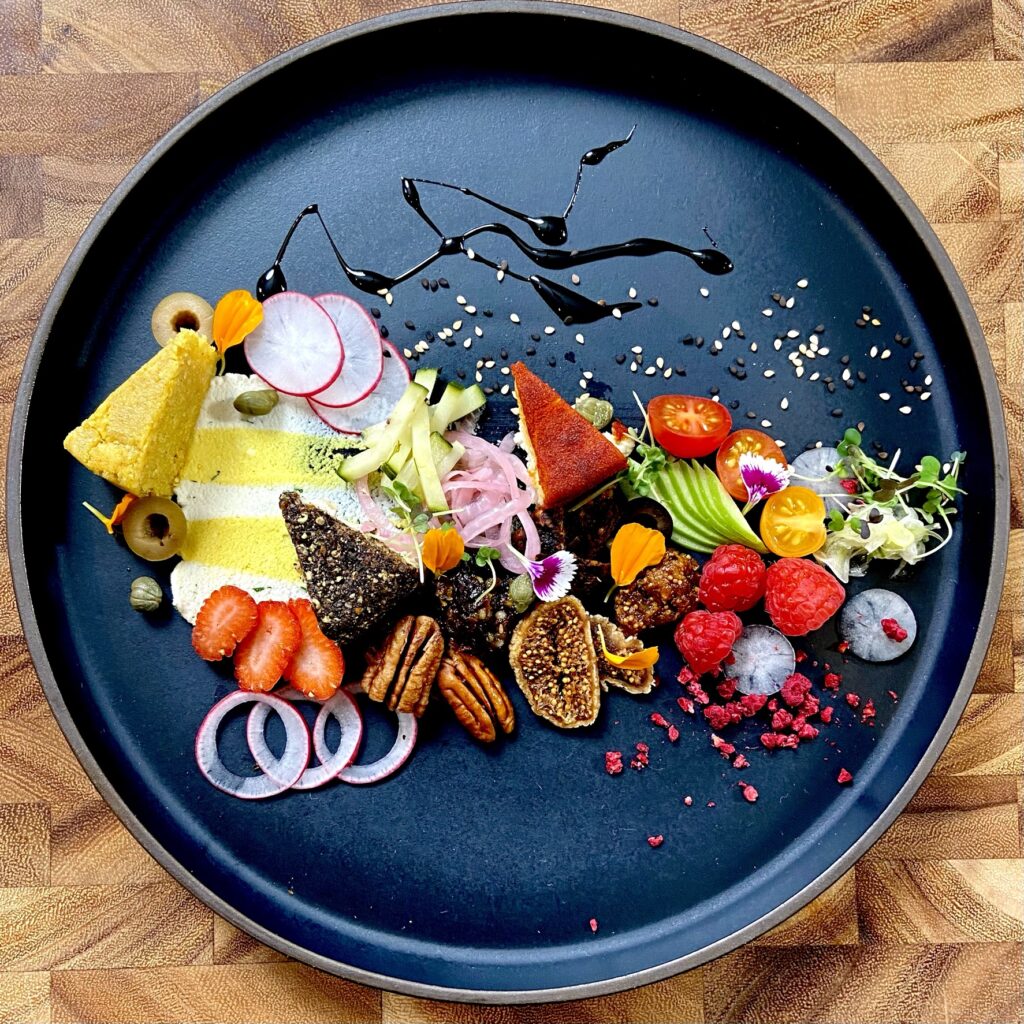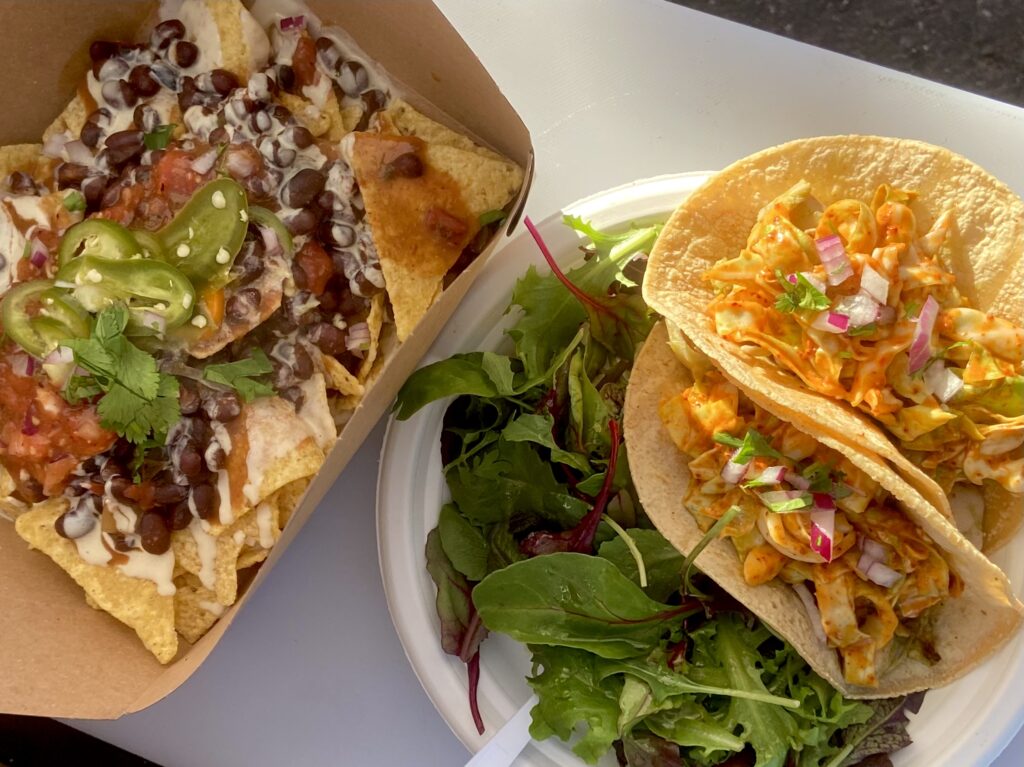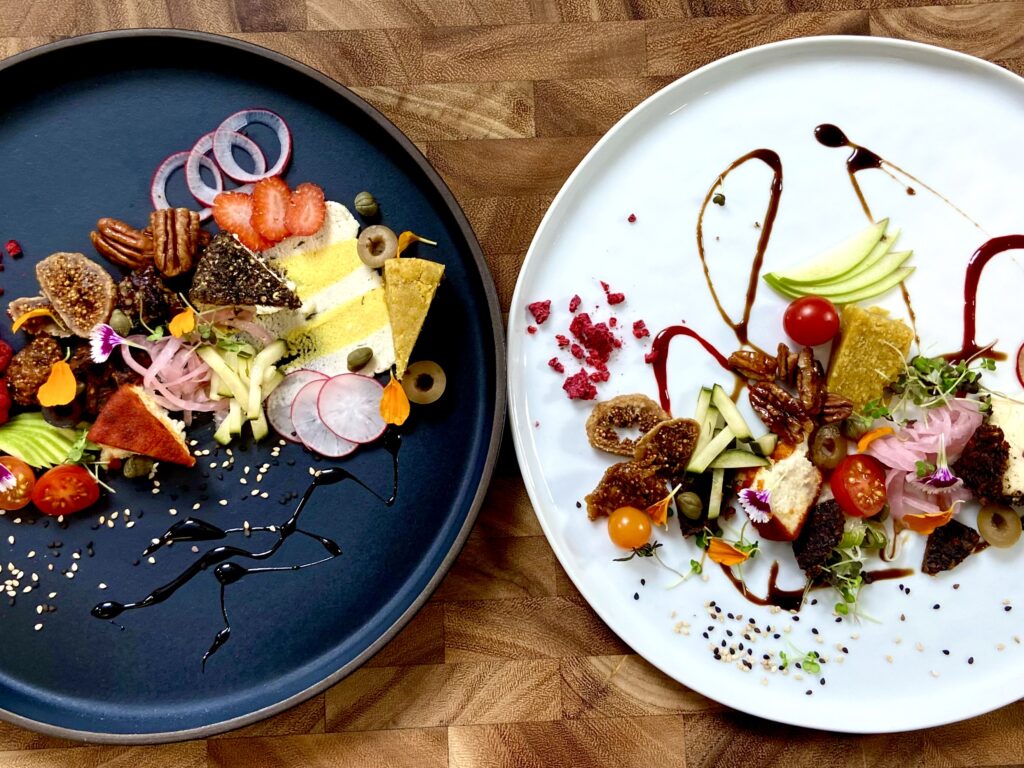Don Maloney can often be found at farmers markets in Phoenix serving up plant-based, soy-free, and gluten-free street food. His sandwiches, tacos, and donuts are not only delicious, but they are also inventive and sustainable for the body and planet alike. But Maloney can also be found behind your very own computer screen, teaching you the basics of how to prepare and present alternative cuisines that will nourish and satisfy even the pickiest of eaters. In this month’s edition of 18 Questions, we delve into his journey as a professional chef and how he hopes to see the plant-based movement continue to develop in the future.
- “Gluten-free” has become a trend in recent years, but you actually have an intolerance. What are your thoughts on others, who have no issues digesting gluten, seeking out gluten-free food?
I think it’s great when people explore healthier options, and being gluten-free is certainly helpful for some. Personally, I didn’t realize how gluten negatively affected me until after I cut it out, and I imagine many others have gone down a similar path. The biggest concern with gluten-free diets being a trend is for people with severe intolerances or Celiac Disease since many of the gluten-free “options” available can contain gluten from cross contamination.
- You have worked in a variety of restaurants serving cuisines from around the world. What have been some of your takeaways?
Food is a very unifying experience. I remember visiting my Grandma and being in awe of how her food could entice family and friends to the dinner table. You see it everywhere, communities supporting a favorite restaurant, neighborhoods gathering around a BBQ, first dates at a table for two. Food brings people together.
Food makes people happy. I love that food from a hidden gem street food vendor can bring the same amount of joy as an elevated multicourse meal from a fine dining restaurant.
I also think that having a diverse restaurant/cooking background has enabled me to see there is more than one right answer, so keep an open mind when learning something new.

- The terms “plant-based” and “vegan” are interchangeable, yet they can be host to vastly different connotations. Do you prefer using one over the other? Why?
Good question! Yes, while they are interchangeable, I think of them as having their own definition. I think of Vegan as being a lifestyle. It’s a commitment. You have to avoid leather goods and leather clothes, check ingredients on everything, and cut out foods that you may really like.
On the other hand, I think of plant-based as a meal. The commitment is minimal; once you are finished with your meal, the commitment is gone. I think both attitudes are good. Eating more plant-based meals can lead to a vegan lifestyle. I do see quite a few people try to be vegan and give up because they see it as too much work, so usually I recommend eating plant-based as often as you enjoy it, and try to increase that over time.
- You recently partnered with Crystal Dawn to create a “Raw Food Culinary Academy” course. Describe this experience.
Crystal and I had a great time creating this course. We began putting it together in 2020 with the goal of offering a comprehensive course on creating elevated raw food dishes and recipes. We started by developing recipes and then the curriculum. I then flew to Vancouver, BC, where we recorded the videos for the course. It was a really great experience, and I am very proud of what we created.
- What draws you to raw food?
Initially I was drawn to raw food for the potential health benefits. I also like the vibrant colors and fresh flavors that raw food has.

- What other teaching experience do you have?
I taught music classes, and guitar and bass lessons for most of my life, and I have been involved in culinary education since 2014. I have taught online and in person. I was an instructor, and then the director of online education, for a culinary school, and I offer private culinary lessons online and in-person.
- What are the limitations of teaching online as opposed to in-person?
In many ways I feel the benefits outweigh the limitations. Online education opportunities can be more affordable and accessible to some. The time commitment can be at your own pace, and the far reach to a global community that can be a part of an online course is inspiring. That said, it is easier to evaluate quality of work in person, and personal connections are still there, but can be more challenging in an online setting.
- The people you teach bring to the table a wide range of cooking experiences, from parents who just want to cook healthier meals for their children to professional chefs. How do you make your content accessible and valuable for everyone?
When developing the curriculum for the “Raw Food Culinary Academy,” this was something we talked about a lot. We didn’t want to over-simplify the lessons, but we also didn’t want the work to be an intimidating task. While there are many recipes in the course, our goal was not to have you leave able to read recipes, it was to have you leave able to write them. I think we did a great job creating a curriculum that would allow anyone from busy parents to professional chefs push the boundaries of their imaginations.

- How do you think we can make plant-based, raw, gluten-free, and soy-free foods more affordable?
That’s a tough question; prices are going up with everything. Making your own food at home when you can is a great option. Making food from scratch can be more affordable than buying pre-made ingredients. Growing your own food is also rewarding.
Competition between larger health food companies and established traditional companies offering healthy options will also help drive the prices down some. That is happening some with the plant-based meat alternatives right now.
- How else do you hope to see the plant-based movement develop in the future?
I would love for everyone to eat more plant-based options. They are delicious, and they benefit your health, the environment, and the animals. While a full time vegan commitment is a challenge, committing to more plant-based meals each week may be a more palatable task while having similar benefits.
I also hope that as the vegan movement continues to grow, more fully vegan restaurants will be available.
- Describe the journey that has been “The Wild Chickpea.”
The Wild Chickpea was an idea I had when I was working at a farmers market for a local organic farm. I loved the food vendors there, and I really wanted to be a part of that community. Originally my focus was Gluten-free, vegan street food, but when the pandemic hit, that direction changed, and I started making gluten-free baked goods like pizza crusts, baguette crisps, focaccia, and burger buns. Once the pandemic slowed down a bit, and farmers markets were getting busier, I transitioned to the original idea of making street food. I started making wood fired pizzas, sandwiches, and tacos. I no longer make pizzas, but I do make sandwiches and tacos, and I have added donuts to my menu.

- What do you enjoy most about working at a farmers’ market?
Living in Arizona, you can’t beat the weather most of the year, and it is wonderful that we have year round (though hot for a few months) farmers markets. I enjoy the vendor community at the markets, and of course am always grateful for the amazing support from the local community.
- Are there any chefs who inspire you?
Yes, many! Anyone who cooks because it’s what they love to do. Anyone who cooks for their community. But I especially find inspiration in chefs who go beyond serving their customers and extend that reach to those in need. I have never seen a chef okay with someone going hungry. That’s inspiring.
- What does a day of recipe-testing look like?
Usually I have spent so much time thinking about a recipe before I even try it that the actual testing process is pretty easy. Essentially I will have a few options in my head that I think will work, and then in very small batches I will try a few and adjust the variables if needed. Sometimes it is a bit more scientific. When I was trying to understand gluten-free baking more, the first step was to understand different flours and how they worked. I took all the flours I could find, and I made two small biscuits with water: one with yeast, and one with baking soda. This gave me a good idea of how each flour worked on its own. Once you do that you can understand that sorghum flour makes baked goods chewy, or almond flour bakes with a nice crust, and then use that information to adjust your recipes and dial them in.

- What are some of the most-used ingredients in your kitchen?
I always have produce like garlic, onions, cucumbers, tomatoes. I love mushrooms, broccoli and kale. I usually have salad greens when I want something lighter. I always have gluten-free flours to experiment with, and chickpea flour is a regular. I usually have cashews, walnuts and almonds. I buy dried beans and rice in bulk so they are always available.
- What is your #1 tip for someone looking to transition their diet away from meat?
It does not have to be all or nothing; it can be a transition that is at a pace that is comfortable for you. Always keep in mind: if you start replacing two or three meat-heavy meals with plant-based meals each week, that will have a greater impact over time than going fully vegan, getting overwhelmed and burnt out, and then quitting after a month. And you can always switch to being a full vegan if/when that is something you are interested in.
- What recipe would you prepare for someone who is in doubt about plant-based food?
My two go-to dishes that never disappoint non-vegans are my mushroom gumbo and jackfruit tacos. If I want to convince someone that raw food can be amazing, I will usually make them a cashew cheesecake.
- What is your favorite recipe (at the moment)?
Lately, I have been very into Birria tacos and also kimchi fried rice, but now that we are heading for warmer weather, I love Vietnamese spring rolls with fresh mint and other herbs, with a light sweet and sour sauce.
 Food
Food Farmers
Farmers Sustainable Living
Sustainable Living Living Planet
Living Planet News
News